It is advisable to acquire one of the most exceptional solid-state drives (SSDs) available, regardless of whether you are constructing a new gaming system or intending to enhance the storage capacity of your current PC. NVMe (Non-Volatile Memory Express) SSDs are the optimal choice for those seeking the fastest read and write capabilities in storage.
In addition to providing speeds that are up to 12 times quicker than those of SATA drives, they are also more long-lasting and reliable. There are a plethora of options available to you if you are considering purchasing a new NVMe SSD. In order to facilitate the process, we have compiled a selection of the most promising options that are worth investing in.
Crucial T705
Fastest PCIe Gen 5.0 NVMe SSD
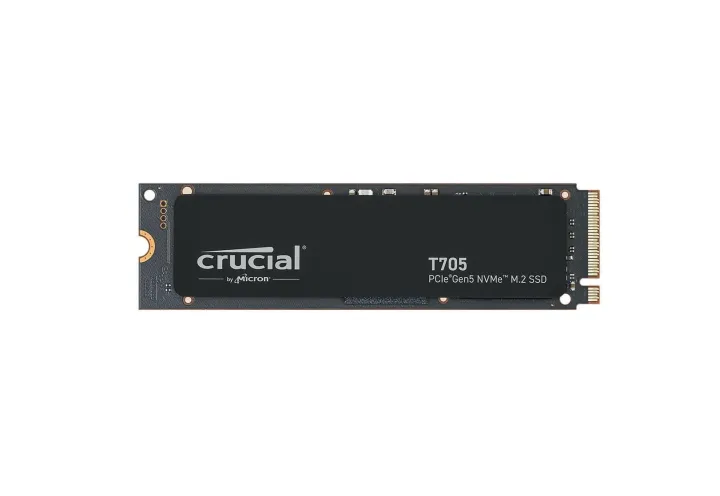
The rationale for purchasing this item is as follows: An affordable NVMe SSD that is among the quickest available.
Who is it intended for: Individuals who require lightning-fast read and write rates.
The rationale behind our selection of the Crucial T705:
Building a new PC in 2024 provides the opportunity to surpass PCIe Gen 4.0 capabilities. The Crucial T705 is a viable option for those who have acquired a more recent motherboard and CPU combination that supports PCIe Gen 5.0. This consumer SSD is one of the quickest on the market, boasting exceptional read and write speeds of up to 13,600MBps and 10,200MBps. It is a top-tier PCIe 5.0 drive. It is well-suited for duties that necessitate high performance, such as gaming and content creation. However, it is susceptible to overheating, particularly in the absence of a heatsink.
Although the SSD was initially priced at a premium, it is presently available for purchase at $155 for the 1TB model and $185 with a heatsink. In general, the Crucial T705 is a formidable force in the SSD market, providing exceptional reliability and performance. Nevertheless, it is imperative to guarantee adequate cooling in order to optimize its performance, particularly in systems lacking built-in heatsinks. This drive is most appropriate for individuals who prioritize performance and are prepared to invest in high-end storage solutions.
Samsung 990 Pro
Fast and reliable Gen 4.0 NVMe SSD
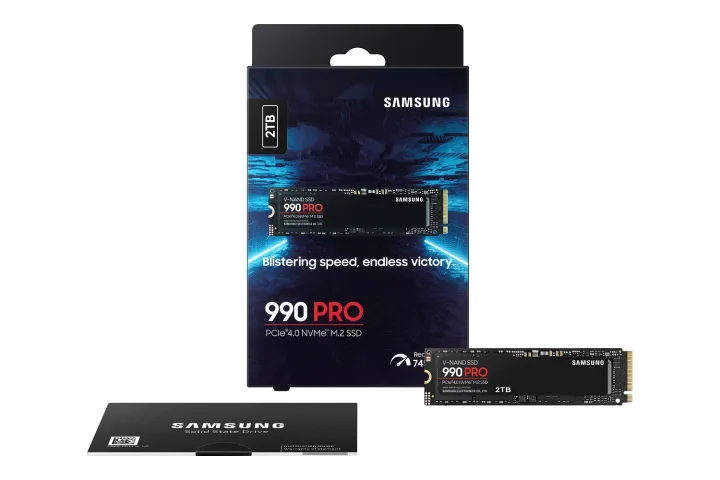
The rationale for purchasing this item is as follows: An all-around performance of PCIe Gen 4.0 with AES 256-bit encryption.
Who is it intended for: Gamers and professionals who desire optimal hardware performance.
The Samsung 990 Pro was selected for the following reasons:
The 990 Pro is the company’s premier NVMe SSD offering, and Samsung has been a dependable name in the flash storage industry. It is also our top choice for individuals seeking the quickest PCIe Gen 4.0 storage technology, as well as 256-bit hardware encryption. The drive is purported to provide sequential read rates of up to 7,450MBps and write speeds of up to 6,900MBps. Samsung asserts that the 990 Pro has a performance per watt improvement of over 50% compared to its predecessor, the 980 Pro, and consumes less power.
Samsung also provides the SSD with a nickel-coated controller and an enhanced thermal control algorithm to effectively manage heat. Additionally, the optional condenser can be employed to further dissipate heat. Furthermore, Samsung’s Magician enables users to monitor the SSD’s performance, including its temperature and health.
Lexar NM790
Best performance at reasonable price
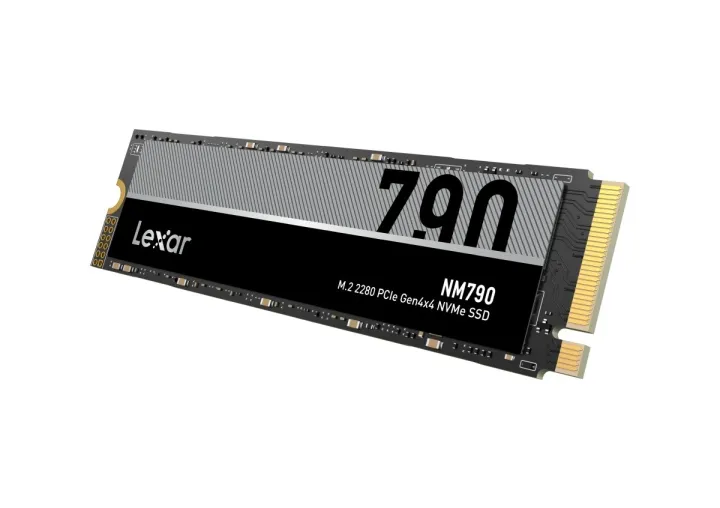
The rationale for purchasing this item is as follows: The most efficient PCIe 4.0 NVMe SSD at an affordable price.
Who is it intended for: Professional users and gamers who require the fastest read and write rates.
The Lexar NM790 was selected for the following reasons:
The Lexar NM790 SSD is a powerful competitor in the PCIe 4.0 market, providing exceptional read and write speeds that render it suitable for a variety of applications, including content creation and gaming. It is an appealing alternative for individuals who wish to enhance their storage without incurring excessive expenses, as it offers reliable performance at an exceptionally low cost.
Nevertheless, the NM790’s performance may be influenced by the absence of DRAM, which is especially true when compared to higher-end drives that have DRAM caches. In spite of this, it continues to demonstrate its ability to effectively manage demanding duties in real-world applications. In general, the Lexar NM790 is a well-rounded SSD that effectively balances affordability and performance. It is an excellent option for consumers who require a fast and dependable SSD with fast PCIe Gen 4.0 speeds.
Seagate Firecuda 530
Speedy NVMe SSD with high endurance
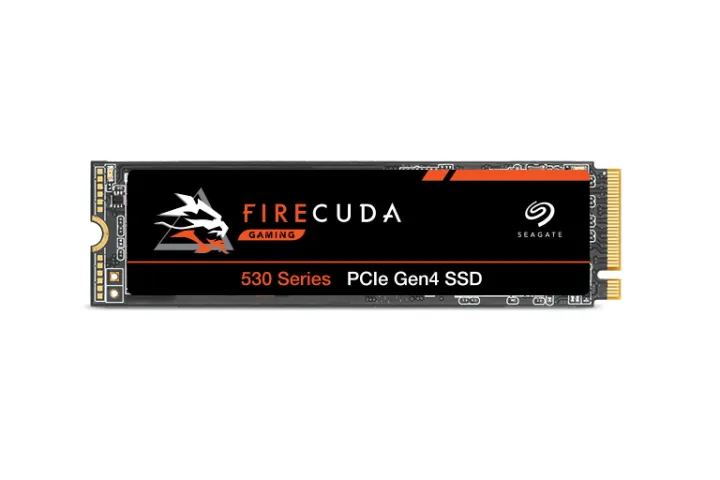
The rationale for purchasing this item is as follows: Provides faster read and write capabilities, thereby increasing reliability and consistency.
Recommended for: Gamers seeking a quick NVMe SSD that can withstand extended use.
The rationale behind our selection of the Seagate Firecuda 530:
Another highly recommended NVMe SSD is the Seagate Firecuda 530, which boasts one of the highest endurance ratings available on the market. The 500GB base model has an endurance rating of 640 TBW, while the 1TB and 2TB models have ratings of 1275 TBW and 2550 TBW, respectively. Additionally, there is a 4TB storage option that can withstand 5100 TBW. Seagate provides an optional custom heatsink that was developed by EK Water Blocks (EKWB) to manage high temperatures. This heatsink ensures optimum cooling efficiency, thereby minimizing thermal throttling and enabling peak performance for extended periods.
The Firecuda 530 is purported to provide the fastest rates available on a PCIe Gen 4 NVMe SSD, thanks to its 176-layer 3D TLC NAND. It is purported to achieve sequential read rates of up to 7,300MBps and write speeds of up to 6,900MBps. It is also one of the few NVMe SSDs on the market that is fully compatible with the PlayStation 5 and has a maximal storage capacity of 4TB.
Crucial P3
Affordable PCIe Gen 3.0 NVMe SSD
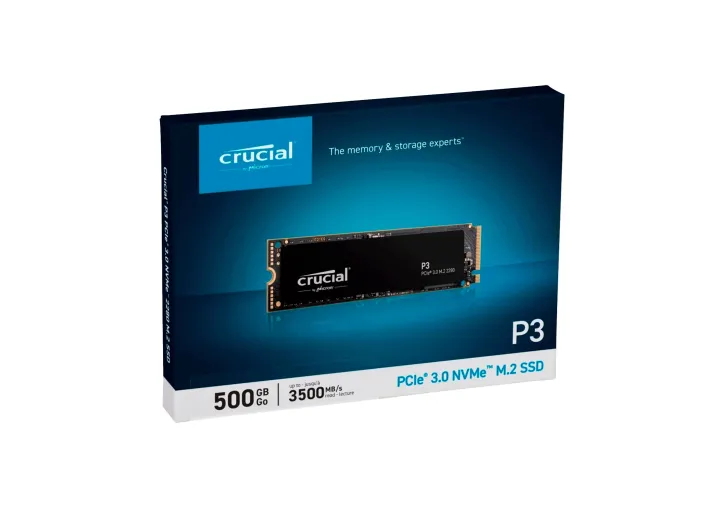
Why should you acquire this: A value NVMe SSD with a PCIe Gen 3.0 interface.
Recommended for: Media professionals and casual enthusiasts who do not require PCIe Gen 4.0 speeds.
The rationale behind our selection of the Crucial P3:
The Crucial P3 SSD is a budget-friendly NVMe drive that provides reliable performance at a reasonable price, rendering it an appealing choice for users seeking a cost-effective storage upgrade. It is constructed from QLC NAND, which contributes to its affordability; however, it may not exhibit the same level of performance as more expensive TLC-based drives, particularly in write-intensive applications.
The P3 is well-suited for general productivity, gaming, and light content creation due to its competitive read and write speeds of 3,500MBps. Nevertheless, the absence of DRAM can have a negative impact on performance during periods of high workload or when the drive is nearly full. In spite of this, it remains viable in everyday applications, providing an optimal equilibrium between affordability and functionality.
One of the Crucial P3’s primary advantages is its value proposition. It offers satisfactory performance at a reduced cost in comparison to numerous other NVMe SSDs available in the market, rendering it an excellent option for budget-conscious consumers. The drive’s allure as a dependable and cost-effective storage solution is further enhanced by its five-year warranty. In conclusion, the Crucial P3 is a reliable entry-level NVMe SSD that provides excellent value for its price. Although not the fastest drive available, it is an excellent choice for users who require a dependable SSD for daily duties or as a secondary storage drive.
ADATA XPG Spectrix S40G
For those who cannot live without RGB
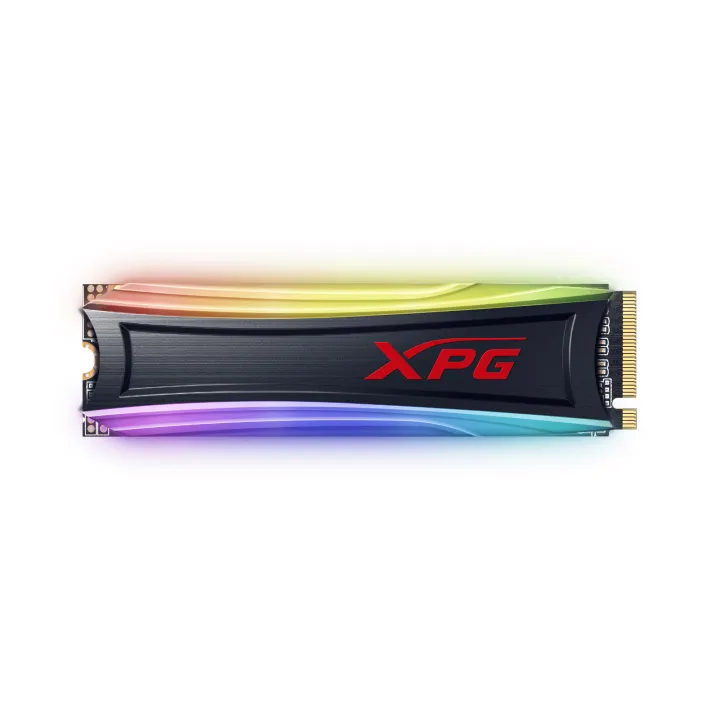
The rationale for purchasing this item is as follows: Affordably priced NVMe SSD with a touch of RGB flare.
Audience: Gamers and enthusiasts who prioritize RGB aesthetics.
The ADATA XPG Spectrix S40G was selected for the following reasons:
If you believed that there were insufficient RGB products in the world, you were mistaken. One of the few NVMe SSDs that includes its own set of LEDs to enhance the RGB quality of your system is ADATA’s XPG Spectrix S40G. The XPG RGB Software-one in conjunction with the S40G enables the management of the drive’s illumination. In addition to a customizable color pallet, there is a diverse selection of pre-existing effects.
In terms of performance, it is a PCIe Gen 3.0 NVMe SSD that is available in capacities of 256GB, 500GB, 1TB, and 2TB. Sequential write speeds of 3,000MBps and maximal sequential read speeds of 3,500MBps are specified. ADATA asserts that the 500GB model provides up to 320TBW, which is not the most impressive among its competitors. Consequently, it is advisable to select the 1TB or 2TB model, which respectively offer 640TBW and 1,280TBW capacities.
Frequently Asked Questions
What does the word NVMe mean?
The protocol or logical interface specification known as NVMe, or Non-Volatile Memory Host Express, enables a computer to access its non-volatile storage media at high velocities. ISimplified, it concerns the data transfer method instead of the drive’s dimensions or configuration. VMe is a storage protocol that is highly scalable and delivers high performance. IThe PCIe interface directly connects non-volatile memory media (NAND and persistent memory) to the CPU. ypical NVMe SSDs based on PCIe Gen 3.0 can achieve transfer speeds that are over six times quicker than those of SATA SSDs. SSDs based on PCIe Gen 4.0 can achieve speeds that exceed 12 times, and the most recent PCIe Gen 5.0 SSDs are approximately 25% faster. ently Asked Questions
What does the word NVMe mean?
The protocol or logical interface specification known as NVMe, or Non-Volatile Memory Host Express, enables a computer to access its non-volatile storage media at high velocities. ISimplified, it concerns the data transfer method instead of the drive’s dimensions or configuration. VMe is a storage protocol that is highly scalable and delivers high performance. IThe PCIe interface directly connects non-volatile memory media (NAND and persistent memory) to the CPU. ypical NVMe SSDs based on PCIe Gen 3.0 can achieve transfer speeds that are over six times quicker than those of SATA SSDs. SSDs based on PCIe Gen 4.0 can achieve speeds that exceed 12 times, and the most recent PCIe Gen 5.0 SSDs are approximately 25% faster.
What is PCIe?
PCIe, which is a serial expansion bus standard that is commonly found on the majority of motherboards, is an abbreviation for Peripheral Component Interconnect Express. High-speed components such as Wi-Fi cards, multimedia cards, graphics cards, and SSDs connect to your PC through this interface. PCIe slots are available in a variety of physical configurations, including x1, x4, x8, x16, and x32, according to the quantity of bidirectional lanes that connect to them. The initial iteration of NVMe drives was capable of fitting into a standard PCIe motherboard slot, much like a graphics card. However, the M.2 form factor is now the standard for modern NVMe drives. Like miniature rods, NVMe drives with the M.2 form factor are a few inches in length and approximately an inch in width.
At present, there are five generations of PCIe: PCIe 1.0, PCIe 2.0, PCIe 3.0, PCIe 4.0, and PCIe 5.0. It is advisable to acquire NVMe SSDs that are compatible with PCIe 5.0, in conjunction with a CPU and motherboard that support this technology, in order to achieve the quickest data transfer speeds. However, for everyday computing, PCIe 4.0 and even 3.0 are significantly faster.
What is M.2?
Additionally, SSDs are available in a significantly smaller form factor known as M.2, in addition to the 2.5-inch dimension. It is comparable in size to a stick of gum and resembles a miniature memory module. An M.2 SSD may be SATA-based, PCIe-based with NVMe, or PCIe-based without NVMe.
Are NVMe SSDs more expensive?
NVMe drives may be more expensive than 2.5-inch SATA SSDs due to their rapid speeds; however, the price disparity is gradually diminishing as a result of their increased popularity. For example, the cost of a 1TB Samsung SATA SSD can range from $90 to $110. Priced at the same level or lower is a Samsung PCIe Gen 3.0 NVMe SSD or Gen 4.0 drive with a comparable capacity. Depending on the desired performance, the price of a 1TB PCIe Gen 5.0 NVMe SSD ranges from $130 to $140.
